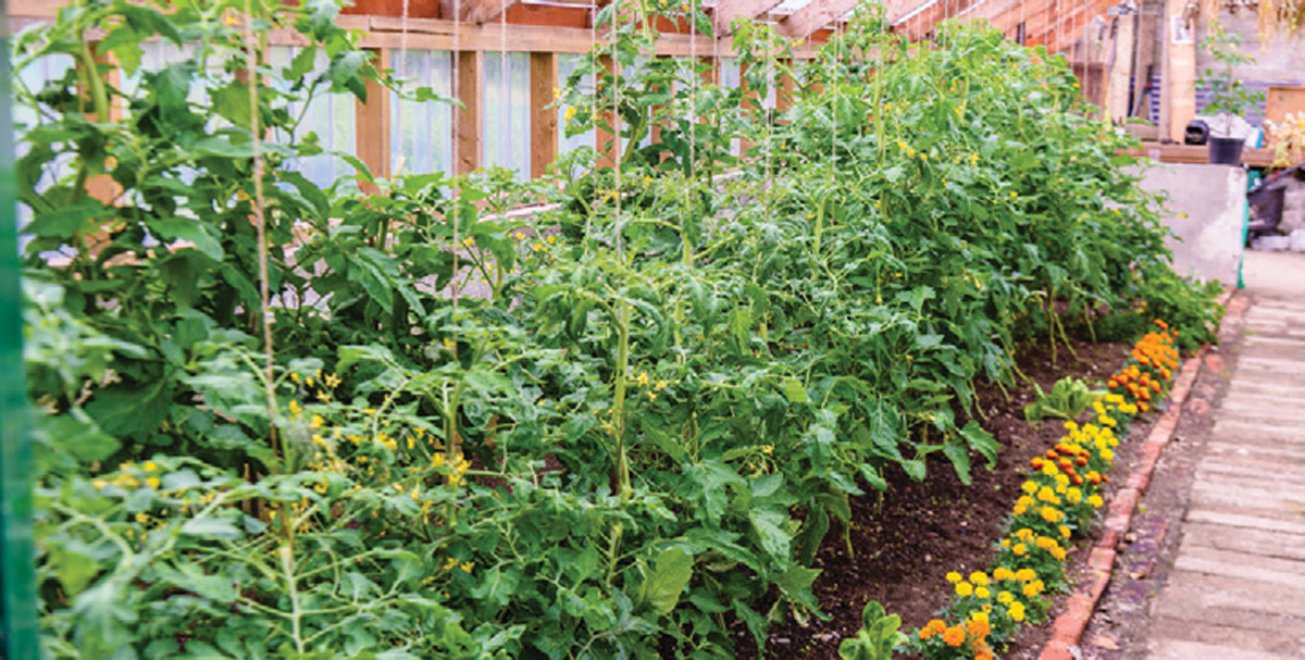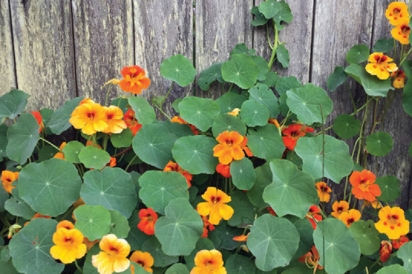Better Together-Companion Planting in the Edible Garden
Companion planting refers to the art of growing plants near each other to benefit one of those plants or all of them. It is a simple, all-natural method that can help reduce pests, attract pollinators, and boost plant growth. To get the down and dirt-y on companion planting, we spoke to a few local garden experts on some of the best North Bay plant pairings to consider when planning our edible gardens this spring.
Jerry Wilson
Nursery Manager
Harmony Farm Supply & Nursery, Sebastopol
Lettuce and Corn: Lettuce needs to be protected from hot afternoon sun or it will die back. Corn will cast shade over the lettuce, allowing it to persist longer into our hot summers. Additionally, lettuce’s shallow root system will not compete with the deeper taproots of corn plants.
Tomatoes and Marigolds: Showy and easy-to-grow marigolds can be a first line of defense against certain pests. Their leaves and flowers produce a chemical called limonene, which repels whitefly, a leaf-sucking insect that can decimate tomato crops. Additionally, marigolds and tomatoes have similar cultural needs moderate water, full sun, and rich, well-draining soil.
Aileen Carroll
Garden Center Manager
Van Winden’s Garden Center, Napa
Banker Plants: Alyssum and Nasturtiums
A healthy garden strikes a balance of good bugs and bad bugs. Not all insects are bad insects! When you add banker plants to your garden, you’re providing an environment for beneficial insects that can fight off the bad bugs and give your plants a boost.
Sweet Alyssum is a great companion plant for any crop that gets aphids, such as lettuce, tomato, artichoke, broccoli, cauliflower, brussels sprouts. Alyssum flowers are a favorite nectar source of syrphid flies whose larvae are voracious consumers of aphids.
Nasturtiums are sacrificial plants grown for the purpose of luring aphids and other pests away from tender greens and ensuring that there are pests around for good bugs to eat. Plant them with lettuce, cabbage and artichokes to attract aphids, and with squash to repel the bugs that feed on its foliage. Nasturtiums are also very pretty and easy to maintain. Some people also like to mix their peppery flowers and smaller, young leaves into salads.
Christopher "Landy" Landercasper
Director of Organic Agriculture, Tank House Farms, Sonoma
The Three Sisters: Corn, Squash and Beans
The Iroquois and the Cherokee called corn, beans, and squash “the three sisters” because they work together to help one another thrive, growing symbiotically to deter weeds and pests, enrich the soil, and provide support. Corn grows straight and tall, offering a natural trellis for bean vines. Beans grow through the tangle of low squash vines up the corn stalks, providing structure for the stalks and pulling nitrogen from the air into the soil to benefit all three. The large leaves of the squash plant create living mulch to shade the soil, keeping it cool and moist and preventing weeds, while the prickly squash vines can help deter raccoons and other animal pests.






